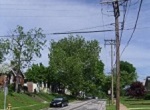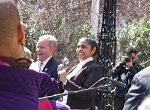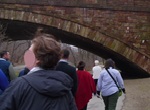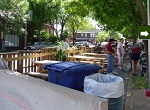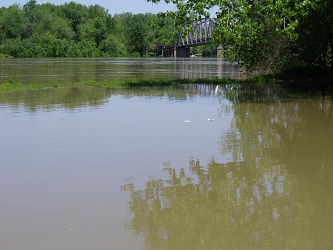How to Organize a Neighborhood Parade Without Irritating Lots of People
If you are looking for a way to add a day of excitement to your community's calendar, consider a neighborhood parade.
I suspect that many of you would say you don't know how to organize a neighborhood parade. You wonder if it is a lot of work, and how to handle certain contingencies such as bad weather or protests. In this article, I will share my direct experiences and observations to show you that a parade may be worth the work, especially if you build a tradition so that there is some organizational memory about how it is done. But I will not be telling you this is an easy project for a couple of people to do.
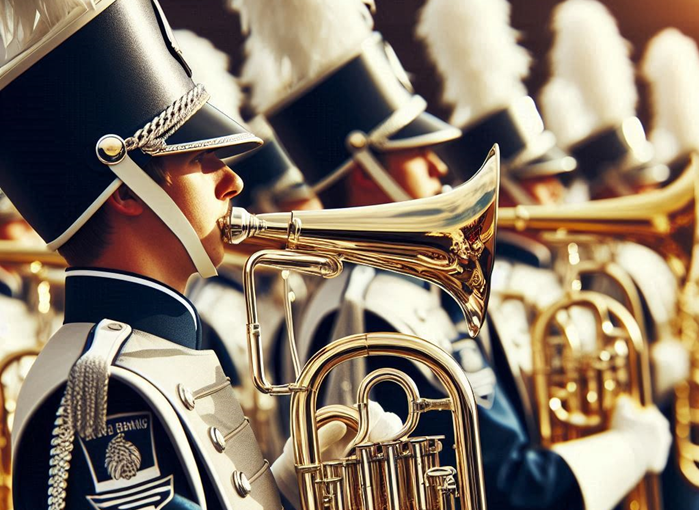
Like most neighborhood projects, if you decide you want to try this, you will need a committee or a designated board, committee, or group of officers. This isn't something for the president of your neighborhood association to try to figure out without any help. If you are reading this and you do not expect anyone would help you, the neighborhood parade is not the right project.
Even more than during the planning stage, on the day of the parade, you will need plenty of help because physically you cannot be at the staging area, beginning of the parade, middle, and end point. So make sure you have some widespread agreement that this is a good idea.
What Every Neighborhood-Scale Parade Needs
The list of essentials for organizing a neighborhood parade is short actually. Every neighborhood-scale parade needs:
- A reason for being, or a theme. If you want to honor a person or team, that will work. If you want to celebrate an achievement such as being named Neighborhood of the Year or something, great. Maybe it's just the change of season you want to usher in, so perhaps your theme is Autumn in Springfield. Maybe it's an historic event or your town's centennial or bicentennial. Perhaps you are rolling out a new marketing idea for positioning your neighborhood within the metro region. The theme is an integral part of the planning, so don't go far without determining a theme that you think will be compelling.
- Music, preferably live music from a band or bands, subsets of bands such as a fife and drum corps or drumline, a jazz band or swing orchestra, or various other instrumentalists. Recorded music blasted from nearby buildings will not do the trick. (Yes, I actually saw a neighborhood contemplate this.) You need live music, and it can't be anything other than rousing music. That's what parade viewers expect.
- Any combination of a lot of children, pets, dancers, clowns, or something else colorful and unpredictable. If you can combine two or more of these, that is even better.
- Some variety. No matter if you had fifty great marching bands from every high school in a 50-mile radius, it would be boring as could be if that is all there is. You can't just have moms pushing babies in strollers or floats populated by beautiful girls in fancy dresses.
- Something exciting as the first entry. Don't put the high school principal in a black sedan at the front of the parade unless he absolutely insists. That's where you have a marching band, clowns or dancers that make a lot of noise, a dozen beautiful horses (not two), or a very locally famous person riding outdoors and waving furiously. Yes, the dignitaries, celebrities, or candidates belong toward the front, but my experience is that they can't be first. One tiny exception is that in most communities, you need the American flag or flag of your home nation, as well as any other flags that are expected.
Some very common entries are not essential to every parade. You don't have to have floats, you don't have to have antique cars, and you don't have to have clowns. It there are no decorated tricycles, football players, or local beauties, you could still have a wonderful parade. Recognize that all of these have their fans, and they are all tried and true parade builders, but the absence of one of them doesn't mean your event will be a dud.
Choosing a Date and Time for Your Parade
Once you have decided that you would like to have a parade, consider dates and times. This may seem like a silly suggestion, but a bad choice here limits the availability of active participants in the parade, spectators, and any media you want to attract.
Cast your net far and wide for possibly competing events, especially those that might have already engaged the services of a band, troop of horses, or local celebrity you are counting on. Look especially at competing athletic events, neighborhood festivals, and even spring and fall cleanups that commonly attracts lots of people. If you must choose the same day as another event, shift your parade to a different part of the day.
As for time of day, consider the likely weather and also competing events. If you plan the parade for a day when people are likely to be planning family feasts or picnics, consider when the cooks want to be tending to the kitchen. If your location is scorching in the summer, consider a start time as early as you can stand, maybe even 8:30 a.m. But keep in mind if you do that, someone will need to start set-up about three hours earlier. If it's likely to be freezing outside, consider scheduling the parade for the warmest part of the afternoon.
Work on the date and time about six months in advance if possible, and once you have decided, be sure to blast that date out to other groups that might compete.
If circumstances mean that you need to do something impromptu, you can do so, but a shorter timeline means that people need to feel an increasingly high commitment to the parade. Yes, cities can and do organize Super Bowl victory parades seemingly in three or four days, but those are the kinds of events that many people will skip work to attend. Your neighborhood parade won't be so lucky, and you won' have massive civic infrastructure behind you.
Also at this early stage, you need to figure out what you will do in the event of inclement weather. Will you postpone the parade in the case of steady rain? Or is this a "rain or shine" parade? What about even more severe weather, such as impending hurricanes or blizzards? What if there is lightning or the tornado warning sirens go off? I mention all of this now in case you want to have a contingency date you publicize early in the process. Of course, some of these more dire events can't be predicted, and in those cases, you have to rely on traditional and social media to spread the word at the last minute.
Permits and Technicalities
Find out early in the process of organizing a neighborhood parade what permits you will need from your city, and what permissions from private property owners you would like. The city may have a street closure permit, a use of right-of-way permit, and formal processes to request police presence. Adhere to all of these procedures promptly so you know that your work will not be ruined by the city or others after you have done a lot of work.
Our related topic, temporary use permits, may be relevant to your situation too.
Enlisting Parade Entries
Probably if you have read this far, you have some idea of what kinds of units you want in your parade. If you have specific people, bands, and other entries you would like, reach out to them directly. Find out who can present the colors at the beginning of the parade; any local military units, or police or firefighters in a pinch, are good candidates. For dignitaries and maybe your neighborhood's officers, you need some good-looking cars, so reach out early to car dealers to see what kind of cooperation you can expect. If there are no takers, then you know you have to start looking at your own residents for pretty cars that they take to the car wash themselves.
Some neighborhood parades I have been involved with have opened a registration process to the general public so interested people could participate. If you want to do this—and you should, if your list of desired parade units is too short—then figure out how you will publicize this process. Use your best social media stars and try to find some local influencers who can help you publicize the possibility for applying to be in your parade.
If you want to feature something complex, such as floats that your parade committee will be responsible for decorating, begin to work on those ideas now so that you don't commit yourselves to more work than seems feasible.
If you will have horses, dogs, llamas, or other animals in the parade, you need a plan for pooper scooper detail.
No one wants to contemplate this, but also among yourselves figure out a date by which you will decide not to have the parade if you don't feel like you have enough entries to make the parade memorable. Spectators will feel ripped off if they come to a parade and you only have the high school marching band, a teenager carrying the flag, the mayor waving from a car, and your neighborhood association officers walking as a group. Probably your parade needs to take at least half an hour to watch unless you are drawing from an extremely localized area that will be keenly interested in the proceedings.
Planning a neighborhood parade route
If you are staging this parade primarily to attract visitors from outside your neighborhood in an effort to sell them on the merits of your community, be very careful indeed about your route. Does it show off your major assets? Does it avoid your worst-looking blocks or buildings? Will it seem safe? Can the neighborhood afford to lose navigation on that route for a few hours, or will that cause an angry backlash? Is the area too hilly, too sunny, too narrow, or otherwise unpleasant for the marchers? Or will it be too hard for spectators to reach?
If you expect a large attendance, you want your route to be as long as you think you can maintain interest. On the other hand, if it is your first year and you are afraid of low attendance, you might want to concentrate your parade route into just a few blocks so that the spectators will feel like there are a lot of people watching.
Of course, the route must be planned by coordinating with your city government and obtaining their blessing. If they will not close the street, you have no parade, so involve them early and often in the planning.
Figuring Out a Lineup
Key to the lineup is figuring out the music piece, so that you have music as much as possible throughout the parade. Yet you don't want the different bands or musical groupings to have to compete with one another. Begin by spacing out the musical entries you want to have.
Recently a neighborhood leader asked for my advice about how many bands are required to keep the parade lively. I have seen various ratios work, so I cannot really offer a rule of thumb, except to say that you need one loud band for every 10 to 20 other units. That is not going to be specific enough for you, I know, but really the answer depends on how large and noisy the particular bands are, the acoustics of the spaces along the route, and how long each of the intervening entries will be. (For example, think about the space required for a single row of marchers or hula hoop artists, as compared to the space that 10 or 12 crazy clowns zigzagging around on go-karts will require. These differences make an impact on how many musicians you will need.)
You will want to follow the most exciting and colorful entries with something more mundane. If you have those necessary but slightly boring entries, such as some minor official waving from the back of a car, disperse those throughout the parade if possible. Sometimes the logic of the situation means that the entire City Council, or the entire neighborhood association board, or the entire team should be grouped together, that will be fine too, as long as the total number of parade units necessary to carry these people, or total number of people to march together, is blessedly short.
Just attempt to spread the entries that you think will cause the highest level of spectator excitement and engagement throughout the parade. Don't give spectators a reason to leave early.
Commonly the "units" in a parade are given a number, which makes it easy for them to line up. If they are number 31, a hundred percent of groups or individuals can successfully locate themselves between 30 and 32.
Communicating with Your Entries
Send our your directions and the unit number well in advance. Cover your contingencies such as bad weather complications addressed above. Talk about what happens in the event of a safety emergency; for example, if police and fire are going to barge right into the parade, as most do, tell them that. If there will be horses, dogs, and clowns on go-karts that might startle them, give a little advance warning.
Give a time for arrival at the staging area, and explain clearly where they are allowed to drop out of the parade at the end and whether or not they are expected to return to a specific staging area. Give more than one contact number in case they need to cancel. Send them a flyer or a graphic they can use to let their own followers know about their participation. Ask for their help in publicizing the parade.
Keep a steady flow of communication so that participants are reminded of your parade and feel it is well managed. (In case you are wondering, yes, I know of one small-scale parade where the leader of the drumline actually forgot the date.)
Sideline activities along the parade route
As you organize your neighborhood parade, think through whether you or another organization or business will be selling refreshments or goods along the parade route. If so, these may involve additional permits from the city or permission from private property owners.
Consider whether some booths or tables could be helpful fundraising vehicles for your own or some other community-minded organization or neighborhood business. Will they enhance or detract from the purposes of the parade? Will they create nuisances, either during the parade or during clean-up? Will they fly away like balloons, or will they make a big sticky mess like discarded cotton candy or ice cream? Will tiny wrapped hard candies fall into the storm sewers or begin to look ugly after they remain on the street for a week?
If alcohol will be served, that generally triggers a whole separate set of permits, which the vendors likely will understand. If these are commercial enterprises, turn the permitting process over to them, but then ask to see their paperwork.
Publicizing the parade
I think publicity for your parade follows the same general principles as all other neighborhood publicity. If you need some pointers, see our page regarding how to promote your neighborhood.
Logistics for the day
As mentioned before, figure out your parade staging area. If it is large, assign each parade entry to a sub-area within the staging area. There they pick up their number and any paper instructions or reminders you want to offer. You also may want to distribute water bottles, sun screen, or anything else you think is important to health and safety. Explain clearly how and when they are to start marching along the route. Also repeat and emphasize anything they are supposed to do at the end of the parade. Do they just disappear into the crowd, or is there a gathering spot on the football field where all of the parade units go afterward?
Typically you will need a person at the staging area to direct each unit about when to enter the parade. If you have someone experienced in the task, so much the better, but if not, just find a volunteer that you think will exercise good common sense. If there is only one person working the staging area, find a bullhorn for that person.
Take notes about what worked and what didn't in terms of both the staging and the entry timing. Have a volunteer or several along the parade route to take note of when some units seemed to be spaced too closely or too far apart. This will help enormously in case you create a sequel to your neighborhood parade next year.
You will need a cleanup detail that works after the parade finishes to make sure that the city and your neighborhood don't have to deal with excessive garbage strewn along the parade route. Doing a reasonable job of cleanup goes a long way toward assuring that residents, businesses, and the city don't end up wishing your neighborhood parade had never happened.
Staying organized
As you can tell by now, a neighborhood parade is not the simplest of community projects. To keep your sanity, I suggest making an uncomplicated spreadsheet. Begin with the parade day and work backward in time. In the first column, list the task, and then you will want to indicate a start date, a deadline date, and who is responsible. You might work out a color coding system if you have sub-committees in place to make it easier for each group to spot their responsibilities.
On parade day, be sure to have multiple paper copies of key documents, such as your permits, your lineup, and contact phone numbers for people you may want to communicate with. Put these in sheet protectors and distribute them strategically among those who will be working that day.
After the parade and the cleanup, you no doubt will be exhausted. However, the next morning, if not sooner, begin the processes of thanking each parade entry elaborately and making notes about what went well and what could be better if you and your community stage a parade again.
Read More Things That May be Relevant
Among many possible pages of this website that might be helpful if you are planning a neighborhood-scale parade, we chose two general pages, asset-based community development and neighborhood advocacy, and a couple of pages about organizing one-time events, in this case the neighborhood tour and the temporary conversion of one or two parking spaces into a makeshift park called a parklet.
- Community Development >
- Community Organizations > How to Organize a Neighborhood Parade
Join GOOD COMMUNITY PLUS, which provides you monthly with short features or tips about timely topics for neighborhoods, towns and cities, community organizations, and rural or small town environments. Unsubscribe any time. Give it a try.
